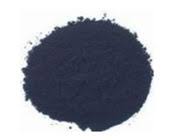sulfur dyes products
Understanding Sulfur Dyes Products and Applications
Sulfur dyes are a class of synthetic dyes widely used in the textile industry, particularly for dyeing cotton and other cellulosic fibers. Known for their vibrancy, wash-fastness, and cost-effectiveness, these dyes have become increasingly popular since their introduction in the late 19th century. This article explores the properties, applications, and advantages of sulfur dyes, as well as their environmental impact and future prospects.
Properties of Sulfur Dyes
Sulfur dyes are characterized by their chemical structure, primarily composed of polysulfide chains, which allow them to form strong bonds with the fabric fibers. These dyes are generally insoluble in water, requiring specific conditions for application. They are often used in a reduced, soluble form that can penetrate the fiber, and upon oxidation, they revert to their original, insoluble state, thus fixing the color within the material.
One of the main advantages of sulfur dyes is their excellent lightfastness and washfastness, making them suitable for items that are frequently laundered or exposed to sunlight. Additionally, these dyes offer a wide range of colors, from vibrant yellows and blues to rich blacks and browns. The ability to create various hues through mixing also makes sulfur dyes appealing to manufacturers.
Applications in Textile Industry
Sulfur dyes are primarily used in the dyeing of cotton textiles. They can impart deep colors and are particularly favored for dyeing denim, workwear, and heavy textiles. Aside from cotton, they can also be applied to other cellulosic fibers and, with specific modifications, even to some synthetic fibers.
The process of dyeing with sulfur dyes typically involves several steps reduction of the dye, application to the fabric, and subsequent oxidation to fix the dye. This involves the use of reducing agents such as sodium sulfide or sodium hydrosulfite, which dissolve the dye and allow it to penetrate the fibers. After dyeing, the fabric is exposed to air or treated with oxidizing agents to revert the dye to its insoluble form, thus fixing it permanently.
sulfur dyes products

Despite their many benefits, sulfur dyes are often perceived as inferior to other dye classes, such as reactive dyes, in terms of vibrancy and range. However, their cost-effectiveness makes them a preferable choice for mass production in certain applications, particularly where rich colors and durability are essential.
Environmental Considerations
While sulfur dyes are generally considered safe for use, concerns regarding their environmental impact have arisen over the years. The manufacturing and application processes can release harmful chemicals, including sulfides, which can lead to pollution in water bodies. In response, the industry has made strides towards more sustainable practices, improving wastewater treatment methods, and developing eco-friendly reducing agents.
Much research is ongoing to minimize the adverse effects of dye production and application. Companies are investing in greener technologies and alternative dyeing methods that reduce water consumption and toxic emissions, ensuring that the dyeing processes align with sustainability goals.
Future Perspectives
The future of sulfur dyes in the textile industry appears promising, especially as the demand for sustainable and cost-effective dyeing solutions continues to rise. The ongoing development of new sulfur dye formulations aims to enhance their application range and effectiveness, including better compatibility with synthetic fibers and improved dyeing processes that minimize environmental impact.
Innovators in the industry are also exploring bio-based alternatives and sustainable practices that can replace traditional methods. The integration of technology in dyeing processes promises to increase efficiency and reduce resource consumption, further solidifying the role of sulfur dyes in eco-friendly textile production.
In conclusion, sulfur dyes remain a vital component of the textile industry, offering a unique combination of benefits for manufacturers and consumers alike. As the industry evolves towards more sustainable practices, the development and application of sulfur dyes will continue to adapt, ensuring their relevance and utility in the modern textile landscape. Their unique properties and advantages will secure their position in dyeing applications for years to come, while efforts to mitigate environmental concerns will shape their future.
-
The Timeless Art of Denim Indigo Dye
NewsJul.01,2025
-
The Rise of Sulfur Dyed Denim
NewsJul.01,2025
-
The Rich Revival of the Best Indigo Dye
NewsJul.01,2025
-
The Enduring Strength of Sulphur Black
NewsJul.01,2025
-
The Ancient Art of Chinese Indigo Dye
NewsJul.01,2025
-
Industry Power of Indigo
NewsJul.01,2025
-
Black Sulfur is Leading the Next Wave
NewsJul.01,2025

Sulphur Black
1.Name: sulphur black; Sulfur Black; Sulphur Black 1;
2.Structure formula:
3.Molecule formula: C6H4N2O5
4.CAS No.: 1326-82-5
5.HS code: 32041911
6.Product specification:Appearance:black phosphorus flakes; black liquid

Bromo Indigo; Vat Bromo-Indigo; C.I.Vat Blue 5
1.Name: Bromo indigo; Vat bromo-indigo; C.I.Vat blue 5;
2.Structure formula:
3.Molecule formula: C16H6Br4N2O2
4.CAS No.: 2475-31-2
5.HS code: 3204151000 6.Major usage and instruction: Be mainly used to dye cotton fabrics.

Indigo Blue Vat Blue
1.Name: indigo blue,vat blue 1,
2.Structure formula:
3.Molecule formula: C16H10N2O2
4.. CAS No.: 482-89-3
5.Molecule weight: 262.62
6.HS code: 3204151000
7.Major usage and instruction: Be mainly used to dye cotton fabrics.

